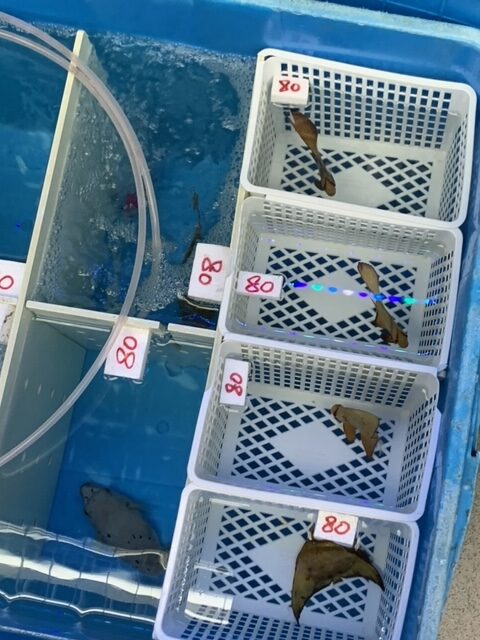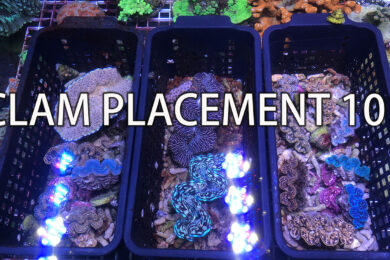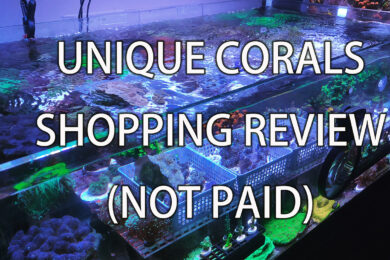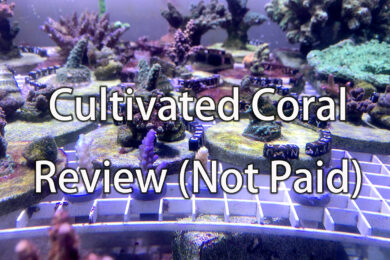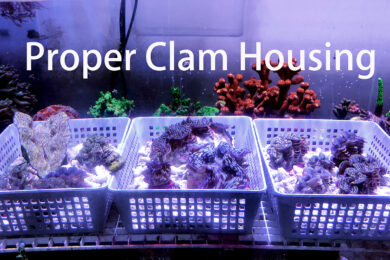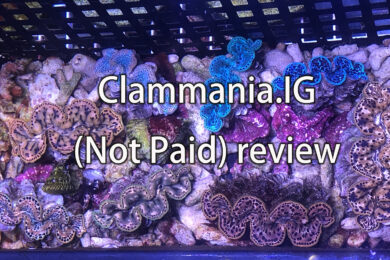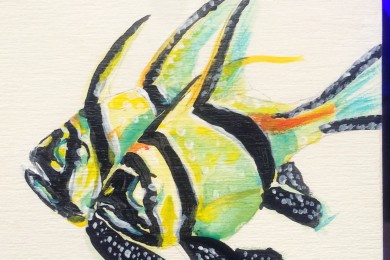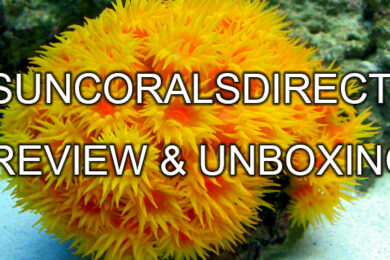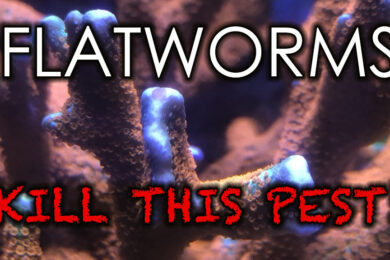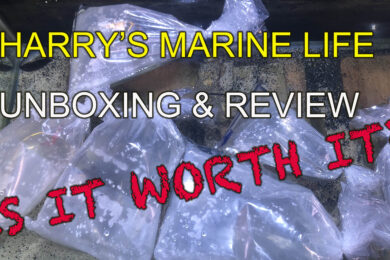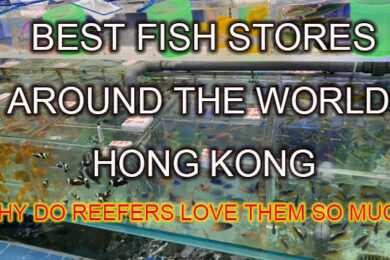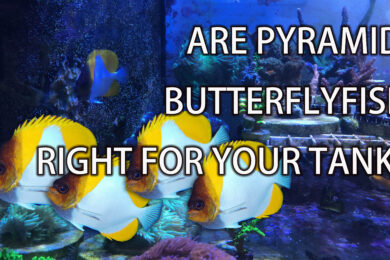Hello Everyone, Steven here! Today we are starting a new exciting series by interviewing fellow reefers from around the world and compare the livestock, pricing, and some different practices based on local climate or resources in the hobby. If you enjoy my content, please help support me by liking, commenting, and subscribing!
If you prefer to enjoy this content in video, please feel free to skip the writing below:
Helen is a Canadian native who currently lives in Hong Kong. We met at a Facebook reefer group (Reef Aquarium Lovers) while discussing our experiences with goniopora per my previous post. The conversation escalated to the LPS corals she can find in local fish stores in Hongkong and helped inspire this series.
Below please find our conversation in the form of Q&A, with photos taken by Helen at the Hong Kong stores to illustrate.
Also, as of today the exchange rate between Hong Kong Dollar to $US Dollar is 7.75:1. So whatever price you see basically divided by 7 (consider sales tax) is what it would be in USD.

Q: Is there a large saltwater aquarium hobby community in Hong Kong? Are there aquarium clubs people regularly gather together to socialize and trade both livestock, dry goods, and experiences?
Helen: Yes there is a large saltwater aquarium hobby in Hong Kong but the difference is that people are more reserved and not willing to share as much since I have noticed that not much new people are going into the hobby because of gate keeping. There is an app called band where everyone in Hong kong sells frags,equipment, fish there. It is mostly centralised in that app.
I’m in a more western reef keeping club and it’s much more friendly there and people trade and give advice more freely without bias.

Q: How far is the nearest local fish store from your home?
Helen: It’s about half an hour away. Usually all the fish stores are in the same street or area. So very convenient.
Steven Note: This is very common in Asia- businesses of the similar nature tend to cluster themselves. Hence we have electronic streets where the entire street sells nothing but electronic products, shoe streets with shoe stores end to end, and aquarium streets where you can go door to door finding the fish you like and compare prices all within a square mile.
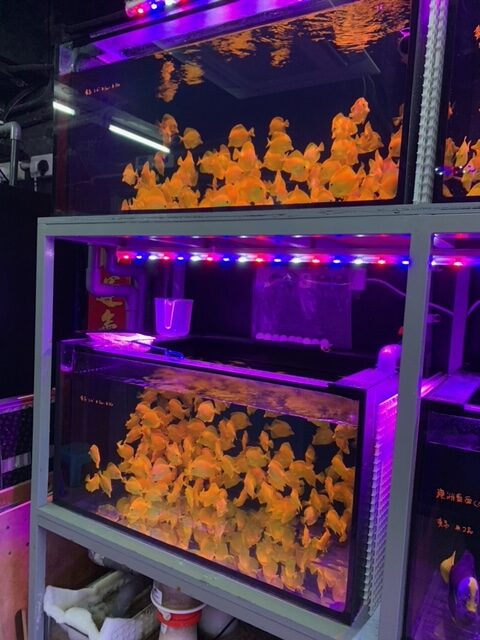
Q: What is the most expensive livestock you have ever seen at this store? And how much $USD?
Helen: The most expensive live stock I’ve seen is a $2500 acanthophyllia it was amazing. Mine you usually corals are expensive when they go above $250. So you get what the average coral price is. The most expensive corals are scolys, cynarina and acanthophyllia. Hong Kong love meat corals
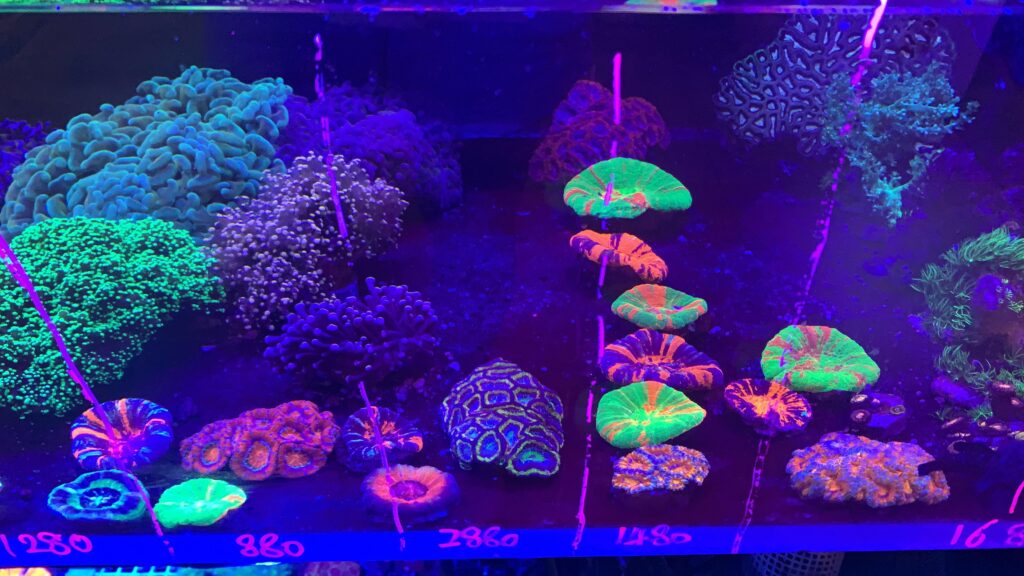
Example is AAA indo holy grail torch is about $250 2 heads below is a photo from a reefer friend who paid $250 for that it’s the top right
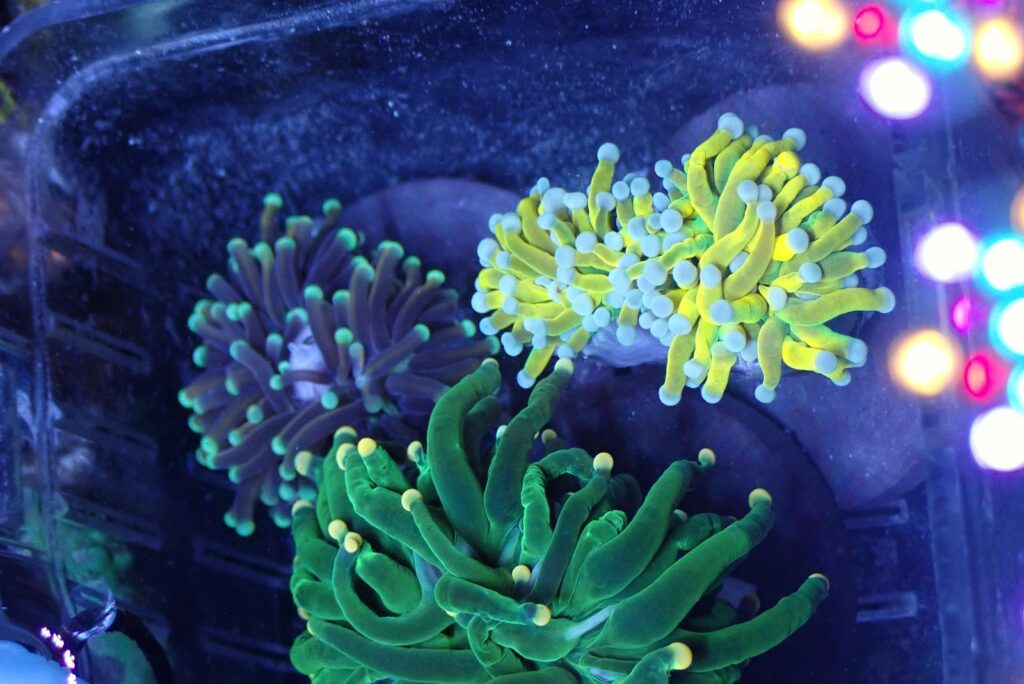
Q: What are some of the stable, bread and butter livestock in Hong Kong’s reef stores?
Helen: Actually there’s not really a stable just everything you can imagine seems to be readily available. There are seasonal fish and corals but they come in every year in the same time so if you miss it you could always wait for it the next year.
I’d say leathers are the bread and butter in Hong Kong along with the obsession of goniapora now.

Steven Note: Hong Kong is the first stop for many of the corals and fish originates from the South East Asia before they move on to the rest of Asia, Europe, or America. Hence the livestock there is quite abundant and is basically wholesale price compare to many of the downstream countries.
Q: Are there anything you want to see but cannot find in local stores due to government policy? Are there any way around it?
Helen: If there’s one thing in Hong Kong it’s that as long as you have the money and willing to pay for it everything is free game regardless if it’s legal or not. The laws are very lenient and no one will report you or actively look for people who have illegal animals.
Actually most corals in Hong Kong don’t have cities permits their actually illegally imported. That’s one of the reason why they are so cheap but regardless if it is legally imported it would still be cheaper the in the US i guess.

Q: Being an island in the tropical waters, do hobbyists in Hong Kong collect livestock in the wild? Is there a limit? And what are some of the commonly seen creatures in store you can find at the shoreline?
Helen: Some do but mostly no one wants the local corals or fish cause their not colourful and a bit ugly. Brown and dull is the word you would describe Hong Kong local corals.
There really isn’t a law for it but I think your not suppose to be selling local sealife without a permit. Collecting for yourself it’s free game.
Local sea anemone below. Why you want this when you can get a bta for $30
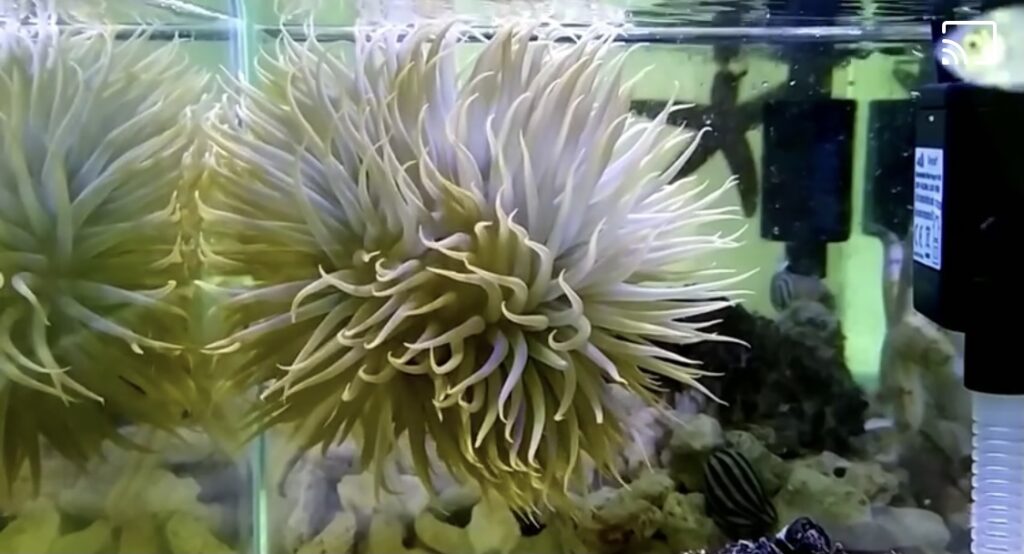
Q: Do people use natural sea water or synthetic water?
Helen: 90% of fish stores in Hong Kong use toilet water which is filtered Natural seawater. They pump the water from the toilet.
Steven Note: This blows my mind. But in an Island city where water is extremely scarce, using sea water to flush toilet is the right strategy to conserve fresh water.
Usually most hobbyist use synthetic water but some hobbyist swear by toilet water. If you use toilet water you gotta check with the building management if they treat their toilet water with chlorine. The salinity is usually around 1.024-1.026 I’ve checked my own toilet water before since I was curious. I don’t have the guts to use water from my toilet.
Steven Note: So…. Helen uses synthetic water….. too bad cause then all reef community will be eager to feature your tank and call it the toilet water tank LOL.
Q: What is an example that is very expensive in the North America trade but very inexpensive in Hong Kong?
Gem tang $100 in Hong Kong.
Purple tang $38
Candy bass $250
Blue tail wrasse $380 male $320 female
I think all corals in Hong Kong is pretty inexpensive compare to US.
Aussie 24k gold torch $100 a head
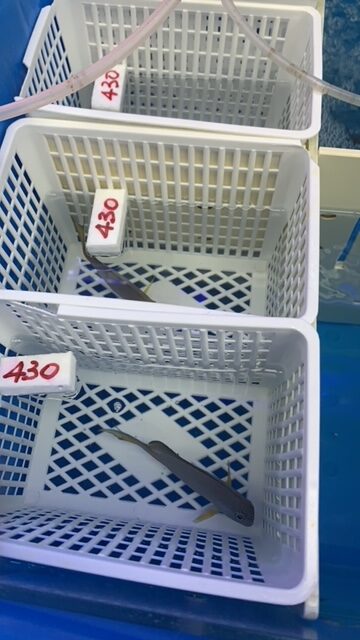
Q: Where do most of the livestock in Hong Kong came from? How sustainable are they?
Helen: From fish farms in Vietnam, Bali, Thailand etc. I think it’s the same suppliers as the US but some do buy stock from more lesser known small suppliers.
As for how sustainable I think that’s usually the practise of the fish farms in general. Usually the market want colourful corals so maybe wild cultured corals are being sold more so more sustainable I guess? Unless it’s a scoly or meat coral then that’s really not sustainable since everyone wants one nowadays.

Q: Living quarters in Asia are generally tight, what size is your aquarium? And what is the largest private aquarium size you have ever seen?
Helen: Usually people have 30gallon to 100 gallon aquarium. Yes space is a real issue in Hong Kong so most people have small tanks.
Largest private aquarium I’ve seen is a whole wall in a room is a aquarium. It really 2 extremes in Hong Kong cause there are many rich people also who just pay people to deal with the tanks and corals. Our group has the owner of Redfin who makes massive aquariums for people in hk and Dubai.
Below is a aquarium in hk apartment.

Q: What are some of the technology/techniques that Hong Kong reefers regularly use that is not popular in North America.
Helen: Using toilet water. Also I guess not really dealing with ich the same way as NA. Most people just manage it here in hk as space is limited for a QT tank. Also the constant dosing of bacteria into the DT even when it’s cycled. So mb7 and TN bacteria is always have new stock. A lot of hk reefers also prefer using zeovit system. But now most of them are changing away from it.

Q: What is the one thing Hong Kong Reefers enjoy in their local reef stores that will make North American reefers jealous?
Helen: fThe price I guess can’t be beat. Your average joe can have a nice reef with some nice corals. Also maybe the toilet water some would say.
New shipments every week. I guess because Hong Kong is the middle man for china and Taiwan where they repackage the stuff.
The amount of copycat aquarium equipment makes it very cheap to get a powerful return pump, light and tank.
Steven Note: I was originally from Taiwan and I can vouch this is the same across almost all Asian cities, even in Japan we find knock off brand products that are much cheaper than name brand but work the same.
Being near the mainland I guess make it so you can have the stuff brought in cheaper or directly buying it from the factory in China on taobao.
Big Thank you to Helen who took the time to carefully provide these answers, and help snapped pictures of the local fish store in HongKong! Here is a peek at her personal tank!
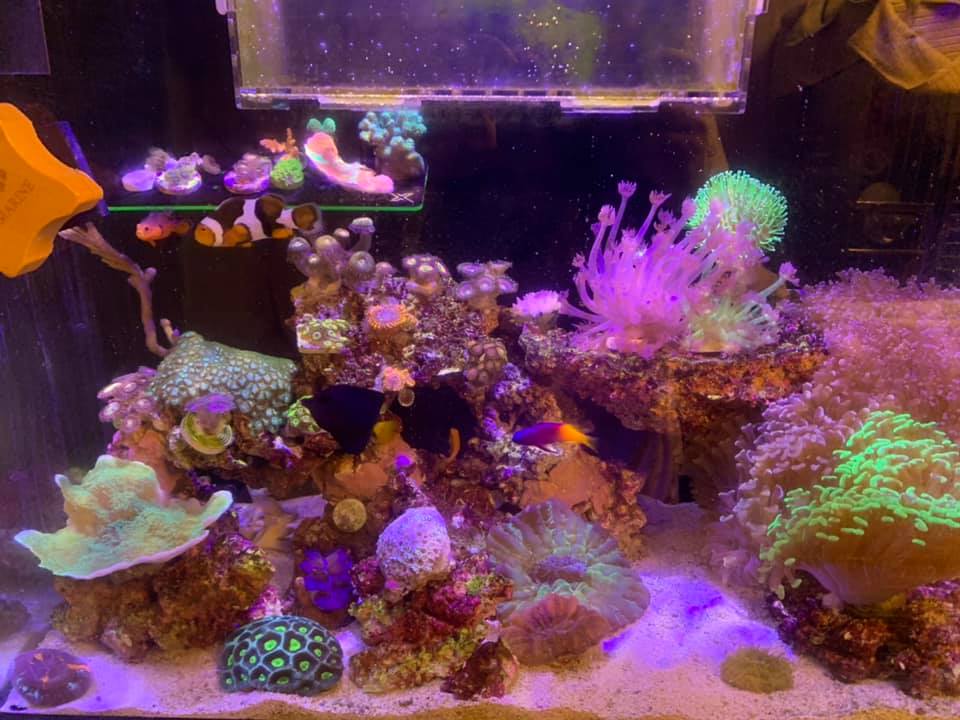
If you are also a reefer in HongKong and would like to add anything unique and interesting about the reefing scene there that we may have missed, please comment and drop us a few pictures of your tank! Please feel free to comment and ask away, I will make sure to relay and connect Helen to help respond!
Below are some more photos of fish and corals from local fish store



